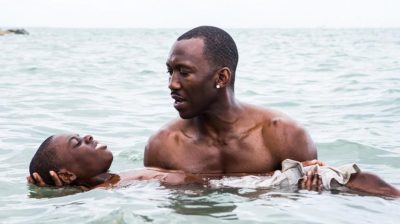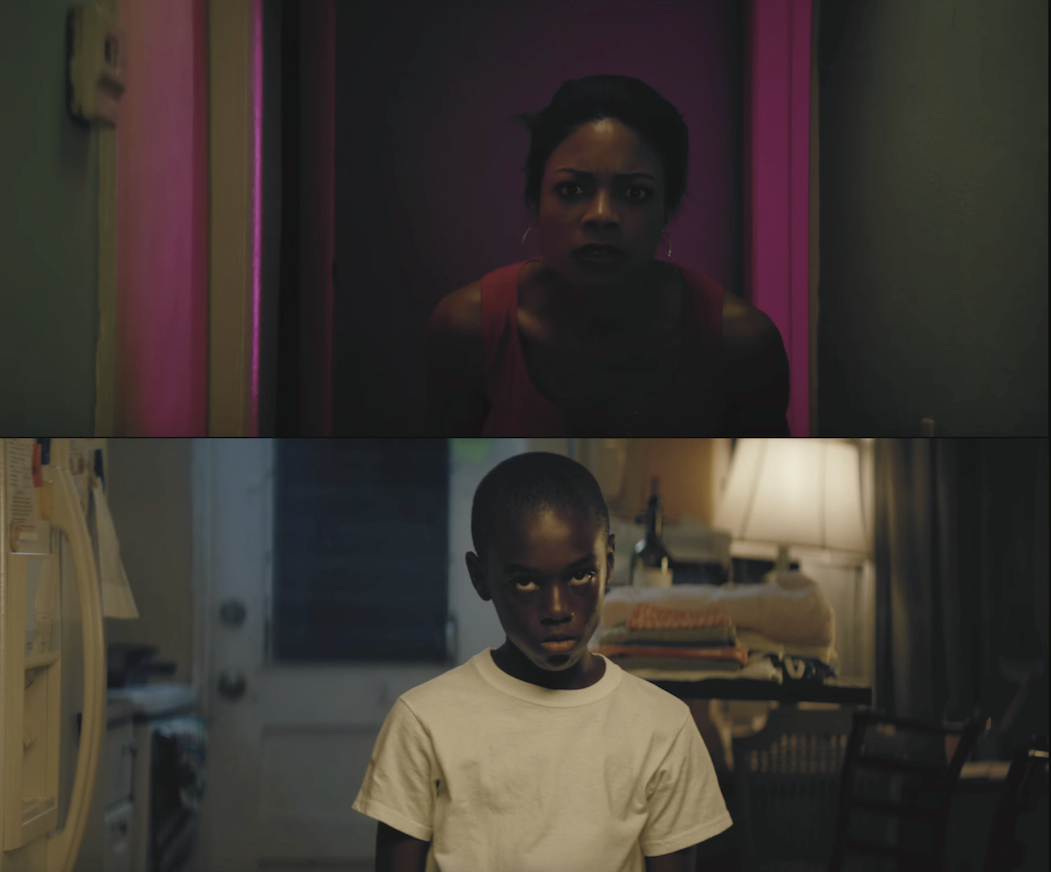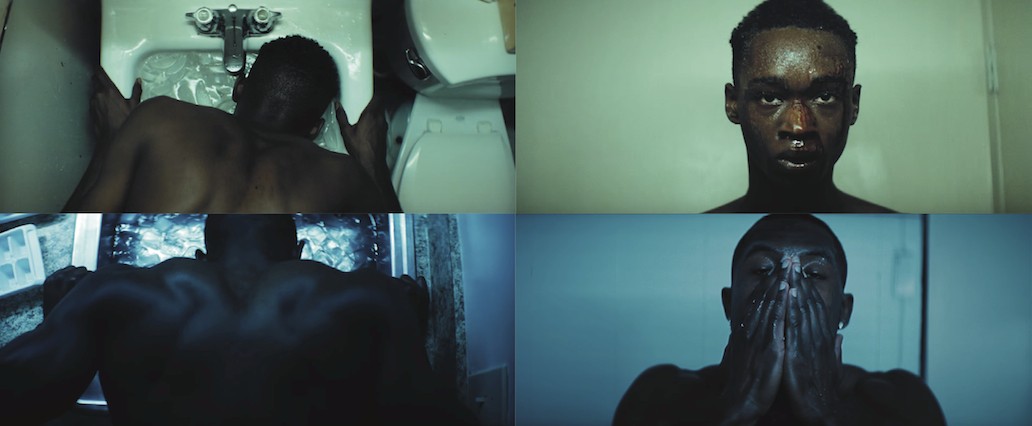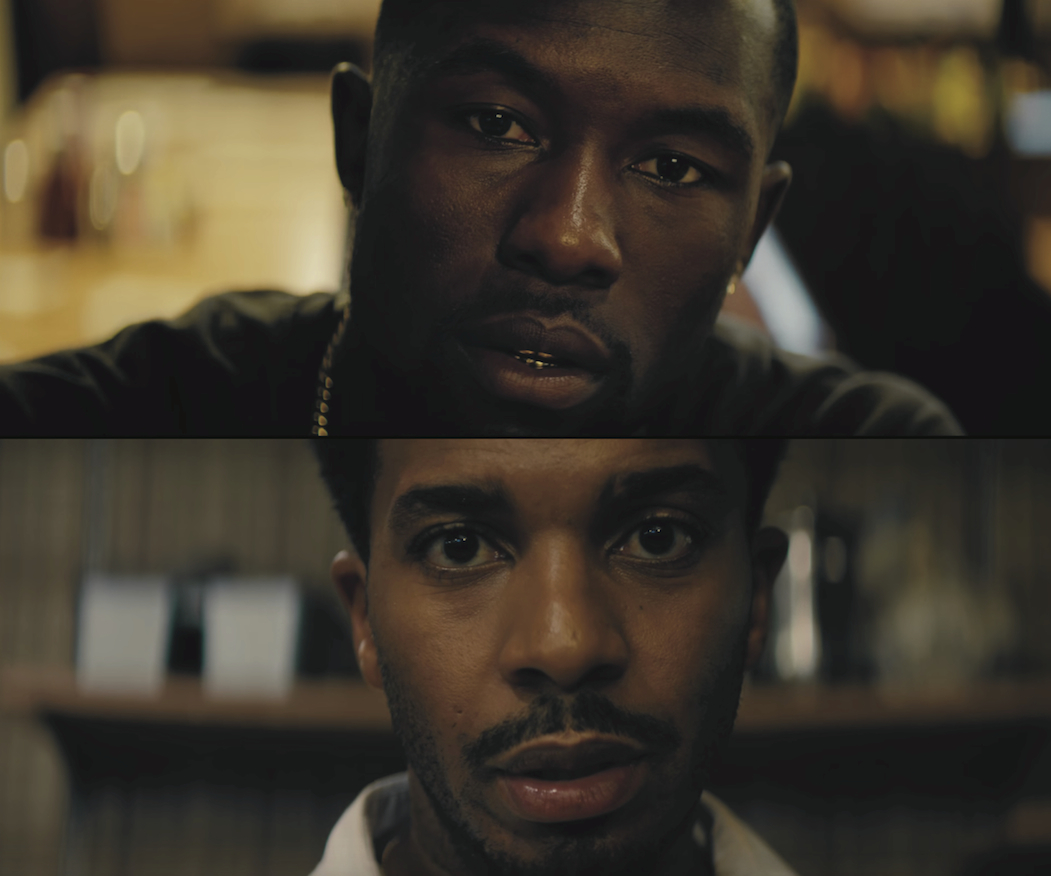 Back to selection
Back to selection
Shutter Angles
Conversations with DPs, directors and below-the-line crew by Matt Mulcahey
A One-Camera Show: DP James Laxton on Moonlight
 Moonlight
Moonlight Moonlight traces the path from childhood to young adulthood of a black gay man named Chiron growing up in a poor part of Miami. For me, it’s a film about identity and how that malleable construct shifts as a reaction to the world around us and the people in our lives. Unfolding as a triptych, each section of Moonlight places a different actor in the lead role, allowing the audience to see a physical embodiment of Chiron’s transformation as those close to him drift in and out of his world — Chiron’s troubled mother (Naomie Harris), surrogate father figure Juan (Mahershala Ali), and a classmate crush named Kevin.
Race isn’t an overt component of the film, but movies do not exist in a vacuum and in a year of #OscarsSoWhite, Black Lives Matter, and – gulp – soon-to-be-President Trump, Moonlight registers as an act of subversion merely by presenting a culturally marginalized character so empathetically.
The film marks the second feature from writer/director Barry Jenkins, following 2008’s Medicine for Melancholy. Moonlight also continues a 15-year collaboration between Jenkins and cinematographer James Laxton, who spoke to Filmmaker about the making of one of the year’s best movies.
Filmmaker: Miami plays such an important role in the look of Moonlight, particularly in terms of the color palette. You and Barry Jenkins went through Florida State’s film program together. Did you venture down to Miami very often?
Laxton: Prior to pre-production the only time I’d spent in Miami was on vacation with my parents as a teenager on South Beach. (laughs) Florida State is in Tallahassee, which is in northern Florida, and it’s such a different kind of place than Miami. I was definitely a duck out of water, but there’s something about going somewhere for the first time when you intend to photograph it. You can come at it from a place where everything is interesting and different and new.
Filmmaker: Did scouting Miami change the way you initially thought about photographing the script?
Laxton: Not that much. Barry and I will talk about a lot of things and throw references back and forth before we scout and we’ll have a broad outline of what we want a film to look like, but we tend to wait until we get into the physical spaces to really get specific, like “OK, this is a good angle, that is a good angle, this is how we’ll shoot this scene.” And then on the day what we had planned might feel terribly wrong for whatever reason. Maybe the actors find something in the scene that makes them want to move to a different space because it feels more appropriate to them, and we tend to adapt to that.
Filmmaker: Was the small portion of the film set in Atlanta also shot down in Miami?
Laxton: (laughs) Yeah, I think with the tax incentives we’re the only film recently to shoot (another city to stand in for) Atlanta.
Filmmaker: You shot with the Alexa XT. Did you record ProRes or ArriRaw?
Laxton: We just did ProRes. In our testing we found that the benefits of shooting Raw didn’t necessarily apply to what this film needed. The Alexa’s latitude (when shooting ProRes) was enough without going down the post-production path with Raw.
Another factor for us was how long we would have on the cards. Working with child actors and working with some people who were acting for the first time on screen, we wanted to be able to keep rolling and keep rolling to make sure we gave them the space to work the performances out. Sometimes on set there’s a momentum that you have when you keep going and going. And sometimes you can keep that momentum by not cutting in between takes and just re-setting, rather than cutting, having the AD call “roll camera,” bringing the slate in, and all these other things that can hurt an actor’s momentum.
Filmmaker: Was it mostly a one-camera show?
Laxton: It was entirely a one-camera show. There was never a B-camera on the job. I operated the majority of the show except for the Steadicam sequences.
Filmmaker: Tell me about choosing the Hawk V-Lite anamorphics as your lenses.
Laxton: We chose the Hawks because they provided the most applicable rendering of what we were looking for. They’re very sharp lenses and also very contrasty lenses. Those are two qualities we were interested in. There’s a trend in film right now to have a low-contrast look, but we wanted to emphasize contrast.
Filmmaker: IndieWire ran an interview with and you colorist Alex Bickel where Bickel talked about using a different film emulation LUT for each period of Chiron’s life – Fuji for childhood, Agfa for adolescence, and then Kodak for adulthood. Did you have those LUTs on set to monitor with?
Laxton: No, on set we were just monitoring with Rec709. There can be a great advantage sometimes to having a DIT provide LUTs and start that base coloring process, but for this project and the pace we needed to work at, just monitoring Rec709 seemed like a simple and fast workflow for us to make sure we were in the right ballpark, knowing full well I would be spending time with Alex Bickel in the Digital Intermediate to polish and enhance the look of the film.
Filmmaker: Some cinematographers don’t like using Rec709 to monitor with because it’s a very contrasty and saturated look, but for Moonlight that works for the film because it’s part of the aesthetic.
Laxton: Exactly, that’s very true. If we were doing something where we wanted a more desaturated look we probably would’ve changed our workflow to suit those needs, but for Moonlight using (Rec709) got us in the realm we were looking for. For me, that’s all I need on set. I’m not one to sit in a DIT booth and make minor adjustments. What I feel my role is on set is to provide a dense negative knowing later in the DI we’ll refine the images.
Filmmaker: Let’s break down a few shots, starting with this image from the first section section of the film, when the character goes by “Little.” I read that you leaned on LiteGear’s LiteMats a lot on this show. Did you use those here for the key lights?
Laxton: In both images the key light is a LiteMat 4 hung on the ceiling with unbleached muslin underneath the units to affect the quality and the color of the light. You can see that on the faces of both (actors) — this warm, soft toplight that falls off very nicely. For the mom’s shot that pink light is another LiteMat placed in her bedroom pushing out of the doorway. Then for Little you see a bit of edge provided from that lamp over his left shoulder and behind him there is some blue from a little LED light above the doorway casting down.
Filmmaker: LiteMats look like they’re just the LiteRibbon that LiteGear makes put onto a flat backing. Is that basically what those are?
Laxton: Yeah, that’s my impression of what they are. They come in different sizes — there’s skinnier ones, there’s square ones. I love them because they are very compact, so when you’re working in tight spaces in apartments like these they don’t take up a lot of room and the quality of light that comes out of them feels very natural without taking up a lot of space. If I were to use a Tungsten unit bounced off of a 4’x4’ board and then pushed through a 4’x4’ diffusion frame to create a very similar effect, it would take up significantly more space. [The LiteMats] are also very lightweight so you don’t need multiple guys to carry them around the set. That means you can work more intimately within an environment and that hopefully has an impact on the performances.
Filmmaker: Next up is the baptismal swimming lesson that Juan gives Little in the ocean. I understand there was originally supposed to be six hours allotted to get this scene, but a storm crept up and you had to get it done in 90 minutes.
Laxton: (laughs) Yeah, that put us into a bit of a bind. In the end I think it worked out. We got what we needed. As the scene progresses you can see the sky become more cloudy and gray, which ends up supporting what’s going on emotionally with the characters. But on a technical level it did pose some challenges for us. We definitely had to work faster than we would’ve liked.
Filmmaker: How far from the shore are you?
Laxton: When Mahershala Ali stood up the water came to maybe just above his waist. For satefy we made sure the kid could stand up as well without being completely submerged. It was the safe choice, but it did put us in the path of where the waves were curling and crashing. That definitely posed challenges for me, carrying around this 200 pound underwater housing with the camera inside and wrestling with the tide trying to make sure we were at the right height to see the performances above the water.
Filmmaker: Did you just use natural light or did a grip wade out with you with a bounce?
Laxton: We were just using what Miami was giving on that day, which was beautiful. Miami light is actually really wonderful. It’s softer and kinder to skin because of how humid it is out there and how much moisture is in the air.
Filmmaker: It’s a small detail, but during the part of the scene where the characters are talking on the beach I was struck by how beautiful the leaves from the palm trees looked swaying behind them. That’s one of the reasons you use anamorphic, for that beautiful bokeh.
Laxton: I don’t think we talked necessarily about trees when choosing those lenses (laughs) but that’s part of the aesthetic inherent in the choice.
Filmmaker: (laughs) Yeah, but you chose to frame that shot to include the trees. You could’ve pointed the camera toward the sky as the background.
Laxton: (laughs) For sure. We were very aware they were there. It was definitely a choice in terms of how high or how low the camera was placed to catch those palm trees.
Filmmaker: Next let’s look at this pair of shots that are almost mirrors of each other – one when Chiron is a teenager and the other when he, now going by the name Black, is an adult. Both shots also have a light flicker in them. Tell me about that choice.
Laxton: It was actually a little challenging to get that flicker on set. Our gaffer had to add a flicker box to the light because we had such a hard time finding a frame rate and shutter angle that would get the right kind of flicker and the right amount of flicker that we were looking for. Usually you use a flicker box to create lighting effects such as a firelight flicker, but here we applied it to a fluorescent light, which by the way I don’t think was very good for that fluorescent light. (laughs) But it was the only way we could find the right amount of flicker.
In terms of the color, some of the choice for the green and blue had to do with the location and some of it was about the tone. The green in Chiron’s bathroom provides an ugliness and a darkness that speaks to the emotional moment that the actor is performing there. Then in Black’s story, the blue light emphasizes more of a cold, hardened feel, which the character at this moment in his life represents.
Filmmaker: Is this just a single source like a Kino bulb above the mirror?
Laxton: Yeah, that’s exactly what it was. Just an empty Kino tube that was taken out of the housing and I believe in both cases we just taped them to the wall.
Filmmaker: There are so many shots I’d love to ask you about because it’s such a beautifully photographed movie, but we’re running a little bit short on time so let’s just do one more. How about this pair of close-ups where Black and Kevin stare right down the lens at each other when they reconnect after a decade?
Laxton: We relied again on those LiteMat 4’s covered with unbleached muslin to give the light that warm, soft quality and that’s what you see reflected as the eyelights in their eyes. As for the down-the-barrel perspective, it was to create this immersive experience that we were hoping for, to create a first-person perspective where an audience feels that they belong inside the film.
Matt Mulcahey writes about film on his blog Deep Fried Movies.




